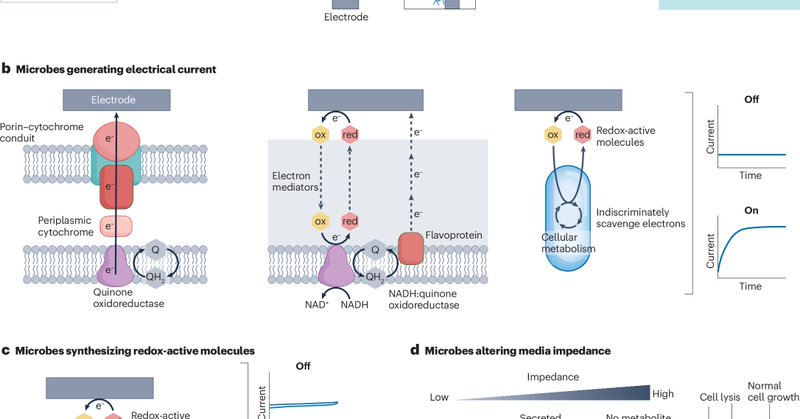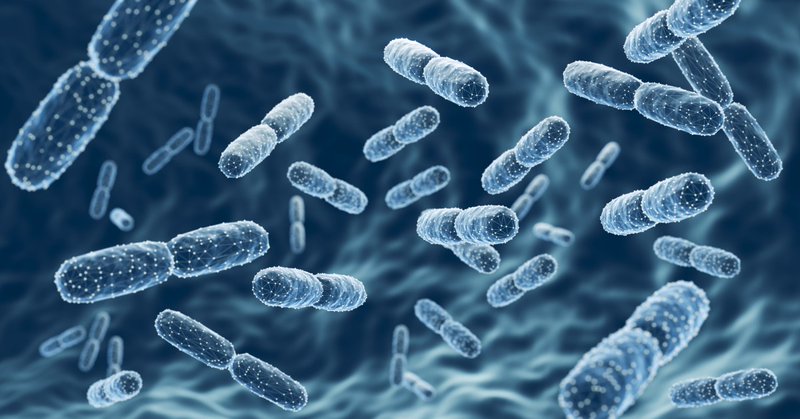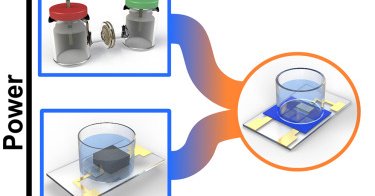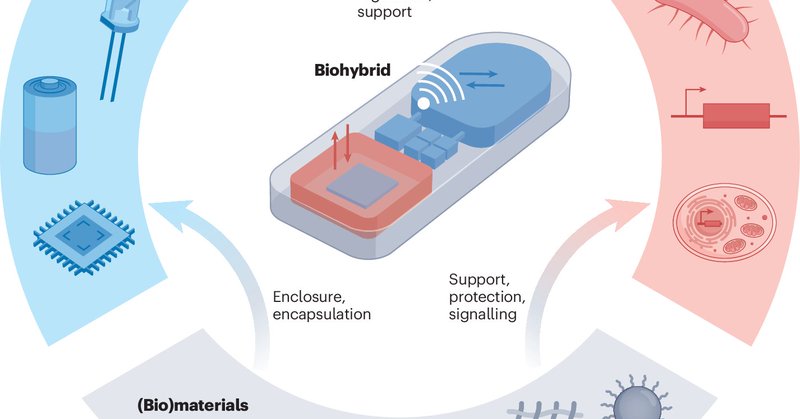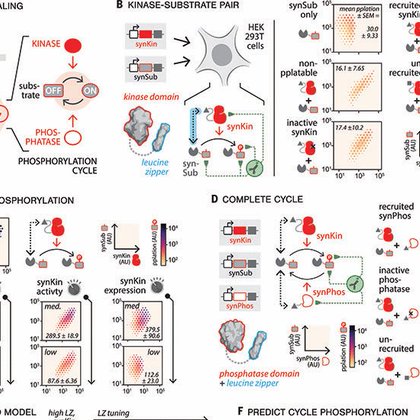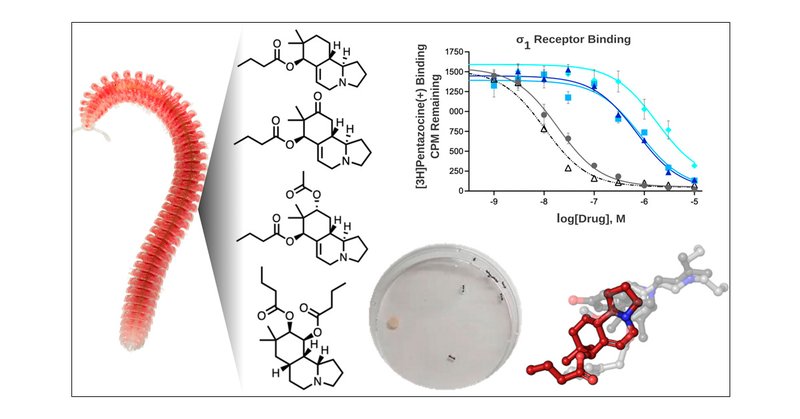
Siliang Li
@SiliangLi3
Followers
267
Following
608
Media
26
Statuses
189
Ph.D. student in Biochemistry & Cell Biology at Rice U, interested in Bioelectronics, trainee of NSF NRT Bioelectronics Pgrm
Texas, USA
Joined December 2017
Glad to share our review article on @natrevbioeng on how to engineer microbial biosensors that generate electrical outputs⚡. Importantly, we propose interdisciplinary approaches to transform these bioelectronic sensors into the field. 1/11 https://t.co/6cLSNHEQrb
nature.com
Nature Reviews Bioengineering - Microbial bioelectronic sensors offer rapid and cost-effective chemical monitoring by generating electrical signals. However, deploying such sensors in the field...
1
8
47
Great to see our research featured in @Newsweek's 'Daily Dose'! We explored how bacteria like Lactococcus lactis cleverly balance making essential vitamin K2 without it becoming toxic. A huge team effort with @SiliangLi3, @oleg_igoshin, @AjoFranklinLab!
newsweek.com
Microbes could be engineered to produce more vitamins for supplements and fortified foods, offering a cheaper and greener alternative to current methods.
0
2
3
Happy to share the latest work from the group, where we show a technique to amplify signals in microbial fuel cells. This can help make a new type of living bacterial device more sensitive and practical. Read the article here:
cell.com
We demonstrate a simple and versatile approach to living microbial devices by coupling OECTs to microbial fuel cells. The OECTs serve to amplify currents and improve signal quality. The relative...
1
4
28
Just out @natrevbioeng, check out our perspective on integrating bioelectronics with cell-based synthetic biology. Shout out to this awesome crew: @veiseho, Tzahi Cohen-Karni, @DrRituRaman, @GallowayLabMIT, @JTRobinsonLab, and Christian Schreib https://t.co/bQ3ejDpIKm 🧵1/7
nature.com
Nature Reviews Bioengineering - Biohybrid devices based on engineered cells interfaced with bioelectronics combine the strengths of each field, resulting in constructs with properties that are not...
3
25
126
Really excited to share this synthetic phosphorylation piece out @ScienceMagazine. We present design rules for engineering synthetic phosphorylation circuits and its application in engineering cell therapy. https://t.co/QZLNqELc4e
1
0
2
Really excited to share this synthetic phosphorylation piece out @ScienceMagazine. We present design rules for engineering synthetic phosphorylation circuits and its application in engineering cell therapy. https://t.co/QZLNqELc4e
science.org
Protein phosphorylation signaling networks have a central role in how cells sense and respond to their environment. We engineered artificial phosphorylation networks in which reversible enzymatic...
3
35
169
This work will undoubtedly shake the field of protein engineering and synthetic biology. Congrats @XiaoyuYang6 !
So excited to see a big chapter of my PhD research out in @ScienceMagazine today! Check out the paper and the detail X-tutorial Caleb and I came up with below!
0
0
2
One final publication for 2024! This work was spearheaded by @CarlaMenegatti but was the ultimate team effort with collaborations with @apheloria, Anne Brown, Thomas Williamson, and Tappey Jones. So happy to finally be able to share this story. @VTChemDept
pubs.acs.org
Millipedes have long been known to produce structurally diverse chemical defenses, including hydrogen cyanide, terpenoid alkaloids, and oxidized aromatics. Although the hydrogen cyanide and oxidized...
1
10
57
Thrilled to share that EVOLVEpro is now published @ScienceMagazine Since our preprint, we now demonstrate low-N eningeering of both antibody and enzymes. We hope this model will broadly useful to the protein engineering field.
science.org
Directed protein evolution is central to biomedical applications but faces challenges such as experimental complexity, inefficient multiproperty optimization, and local maxima traps. Although in...
9
79
345
Microbial bioelectronic sensors offer rapid and cost-effective chemical monitoring by generating electrical signals, but deploying them in the field remains challenging. A Review in @natrevbioeng proposes solutions. 🔒 https://t.co/jEixxoV97M
1
5
23
Microbial bioelectronic sensors can monitor chemical pollution in the environment. In their new Review, Caroline Ajo-Franklin et al discuss how these sensors can be engineered to translate them from the lab to the field @RiceUniversity
https://t.co/eAiZ43sM98
nature.com
Nature Reviews Bioengineering - Microbial bioelectronic sensors offer rapid and cost-effective chemical monitoring by generating electrical signals. However, deploying such sensors in the field...
0
3
18
This work wouldn't be possible without the collaborative effort between the @AjoFranklinLab Lab and @RafRice Lab. Many thanks to the co-authors Xinyuan Zuo and Matt Carpenter, and a shout-out to supportive editor @ChristineHorejs! 11/11
0
0
2
Microbial bioelectronic sensor is a young field with challenges & opportunities. Future directions could enhance sensor specificity, longevity, biocontainment, and device miniaturization. Fostering interdisciplinary collaboration will be crucial to move the field forward. 10/11
1
0
1
Lastly, all components must be integrated into a device for field use. Lab-tested sensor ≠ application. Device fabrication is often neglected because of the lack of expertise in biology labs. Device architecture can be carefully designed for use in varied environments. 9/11
1
0
1
Engineered microbes can escape into the environment or be attenuated by environmental factors. Encapsulation of sensors onto the electrode can prevent signal loss and biocontamination. This can be achieved by bulk hydrogel or thin-film coating. 8/11
1
0
1
Third, equally important to chassis engineering is to establish a robust cell-electrode interface. Electrode property can substantially affect electron transfer and can be enhanced by morphological (2D > 3D) or surface (nanoparticles or redox materials) modifications. 7/11
1
0
1
Selecting a proper engineering strategy can be critical for microbial bioelectronic sensor performance. Often, sensor modularity or specificity can be compromised in order to achieve a faster response time, and vice versa. 6/11
1
0
1
Synthetic biology aids in developing specific sensors by controlling electroactive compounds (e- transfer genes, protein e- carries, redox enzymes) via transcriptional or post-translational (protein switch) regulation. This strategy is powerful but limited by genetic tools. 5/11
1
0
2
Second, how to transform a chassis into a bioelectronic sensor that can sense & respond? Conventional approaches modulate primary metabolism to enhance or diminish electrical current, leading to BOD or toxin sensors. While this strategy is simple, sensing is unspecific. 4/11
1
0
1
First, a chassis is selected. Microbes can generate e- signals in many ways, including EET, e- scavenging from metabolism, synthesizing redox molecules and altering media electrochemistry. An ideal chassis is native to the target environment with defined e- transfer pathways.3/11
1
0
1

